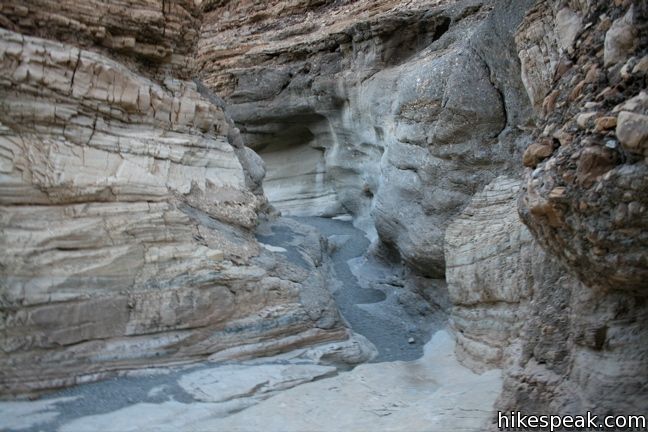Bethsaida Colina
My first stop was the Mosaic Canyon. We can see the different layers of strata deposited here. Mosaic Canyon's polished marble walls are carved from the Noonday Dolomite and other Precambrian carbonate rocks. This rock formation began as limestone deposited during Late Precambrian (about 850-700 million years ago). Looking at this picture of rocks make wonder, were there any glaciers during the formation of this rocks? Was this area an ocean before? This will allow me to understand the type of rocks found in the area as well as why of the layers in the rocks. Also, I would like to know, how was the formation of this mountain chain? Understanding its formation will help me to know was the erosion process in a dessert like Death Valley.
 |
| Marble Canyon Trail |
My second stop was the Titus Canyon, the first thing that caught my attention was the size, color, and layers of the rocks. The rocks lining the walls of the western end of Titus Canyon are Cambrian age (570-505 million years old) limestones. The size of the rocks make wonder how this mountain chain was formed in order to have a narrow space between them? The pressure and heat it took to form these rocks makes me wonder about the forces that had to interact for their formation. Also the layers of the rock make me wonder about how was the erosion process in the dessert? as well as if there is volcanic activity involved in the formation of this beautiful canyon? A geologic map will help to understand better the story behind this formation.
 |
| Titus Canyon Road |
My last stop is the split cinder cone. Less than 300,000 years ago, a chamber filled with solid crystals and searing molten basaltic rock simmered beneath Death Valley. Magma rose toward the surface, following weaknesses in the Earth's crust. Nearing the surface, the black lava encountered the fractured earth of the Death Valley Fault zone. Here is a picture of Ubehebe crater. I wonder if by any chance, will this crater surprise with an eruption in the future? How many times did the volcano erupted before? Knowing this will allow me to understand the type of rocks around the crater and how the eruptions have affected the area. Also, I would know more about hydrovolcanic eruption because the reading mentioned that the Ubehebe Crater field’s ‘most dramatic’ eruptions occurred when the magma met water-soaked bedrock and alluvial fan sediments known as the hydrovolcanic eruption.
 |
| Ubehebe Crater |
No comments:
Post a Comment